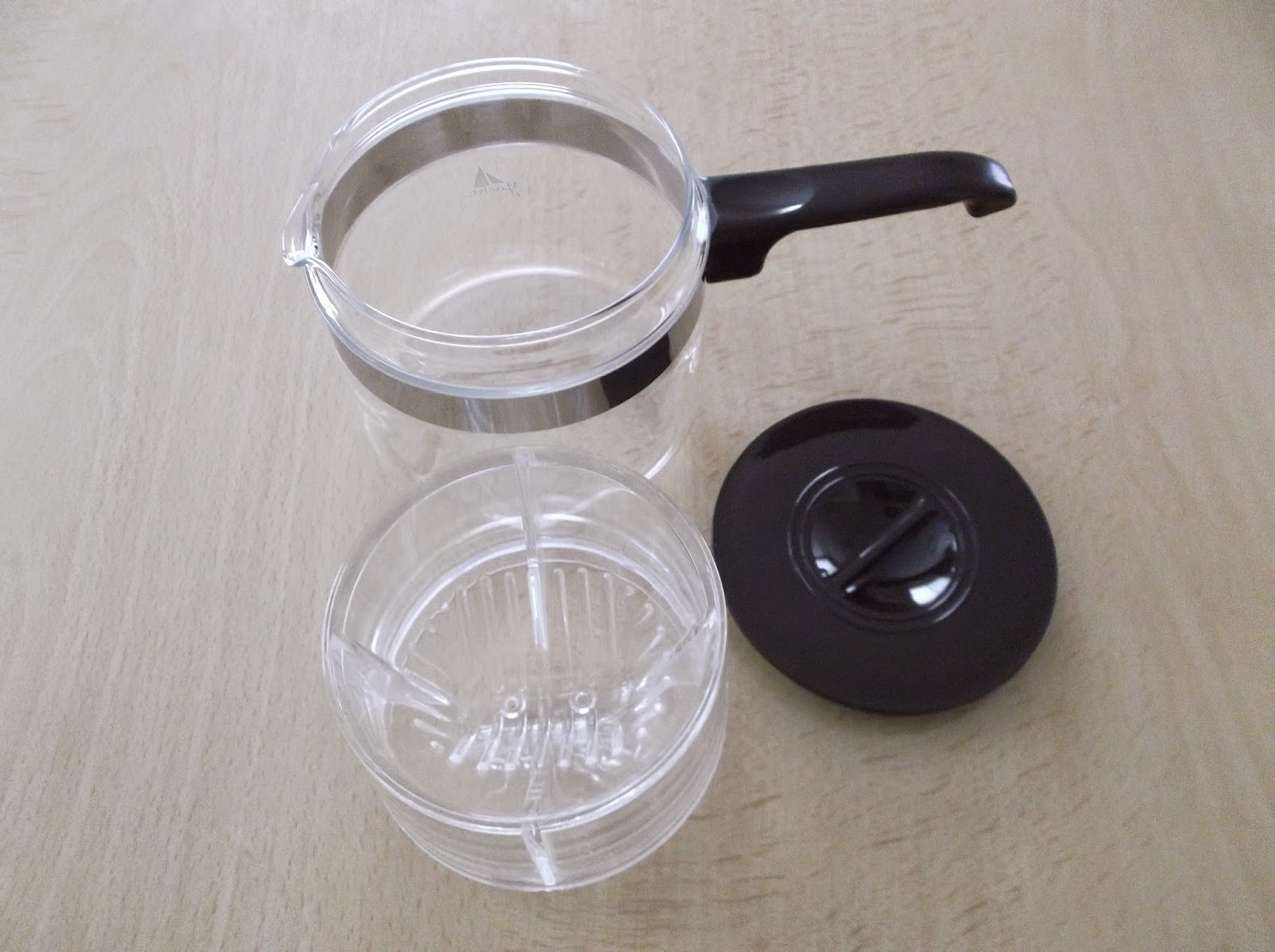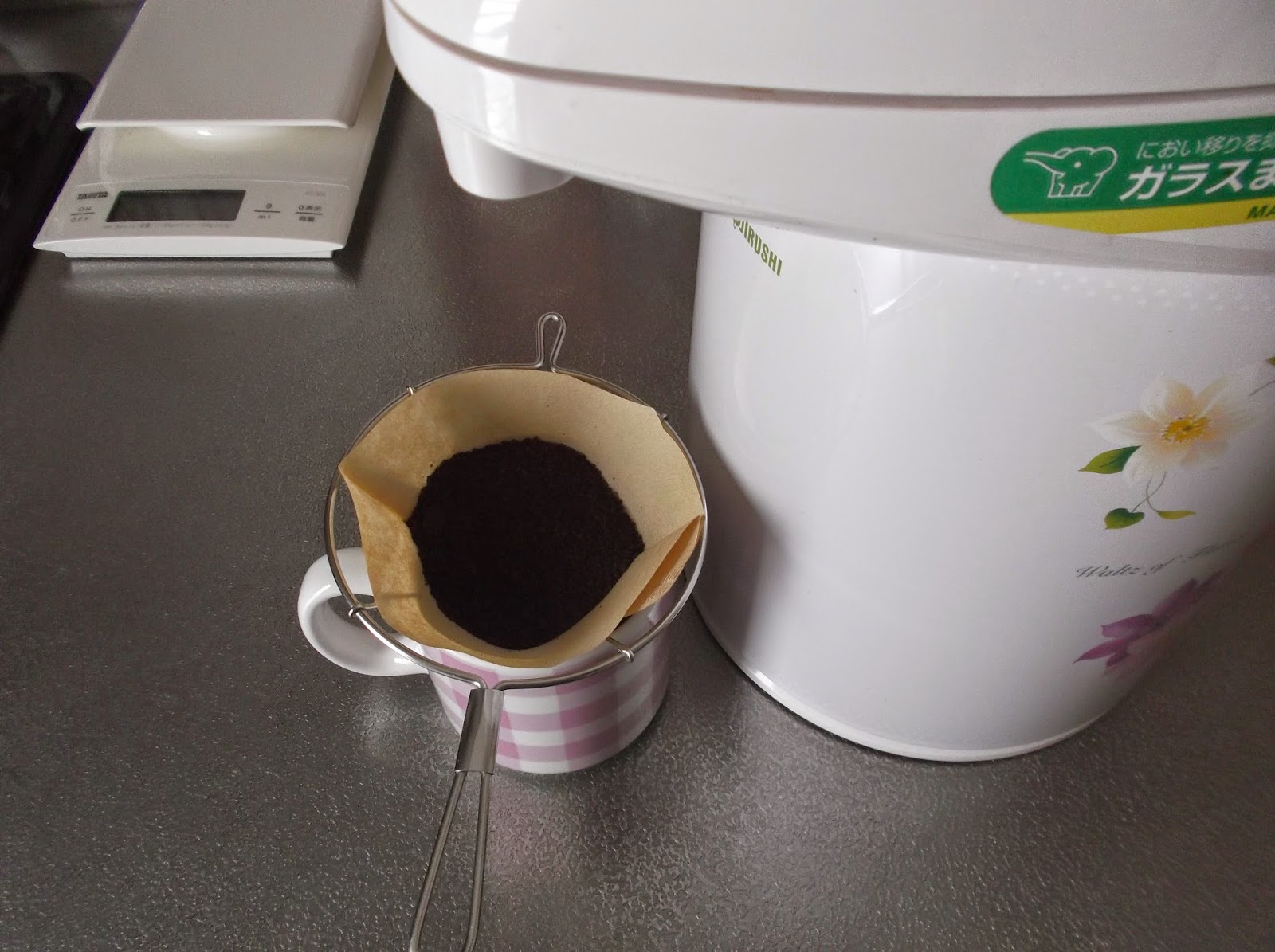After I ran out of Matsuya's and Hario's paper filters, I used this dripper set for a few days, together with the paper filters that I bought at the 100-yen shop.
松屋とハリオのペーパーフィルターがなくなってから、数日間は、このドリッパーセットと、100円ショップで買ったペーパーフィルターを使っていました。
(A set of a lid, a plastic dripper, and a glass carafe for 5 cups (plus some paper filters), all for 500 yen! Several months ago, I found it at the second hand store, and I just had to grab it.)(蓋、プラスチック製のドリッパー、5人用のガラスのサーバー(それにペーパーフィルターが少し)のセット、全部で500円!数か月前、リサイクルショップで見つけて、即(そく)買いました。)
I was amused to see that the dripper had two, not one or three, holes.
ドリッパーには穴が1つでも3つでもなく、2つ開いているのが面白かったです。
I searched for any information about the manufacturer, but in vain.
メーカーの情報を探しました、見つかりませんでした。
Well, nothing wrong with the dripper set: The dripper was great, and the carafe was also great, but I decided to go back to the wire-frame dripper.
ドリッパーのセットには何の問題もないです。ドリッパーはいいし、サーバーもいいです。でも、金枠ドリッパーに戻ることにしました。
These are the paper filters I got from the 100-yen shop. Made in Germany!!!
これが100円ショップで買ったペーパーフィルターです。ドイツ製!!!
I tried these two methods of folding a paper filter into a conic one (Japanese only). After several attempts, I think that one shown on the left is better.
ペーパーフィルターを円すい形にする2つの方法を試しました。何回か試して、左のほうのがいいと思います。
I even made this "template" from used milk carton (top).
使い終わった牛乳パックで「型」も作りました(上)。
Place the template on top of a paper filter like this,
型をペーパーフィルターの上にこんなふうに置いて、
fold the right side, and
右側を折り、
fold the left side.
左側も折ります。
I folded the left side to the opposite side. You can also fold it to the same side. I have tried both ways, not much difference between them.
私は左側を反対側に折りましたが、同じ側に折ってもいいです。どちらも試しましたが、大した違いはありません。
The paper filter now looks like this.
ペーパーフィルターはこんな感じになります。
Place it in the wire-frame dripper.
金枠ドリッパーに載せます。
Let me tell you that I have changed my brewing method completely. I grind the coffee beans finely with my Milser (small blender), and put them in the paper filter, and
抽出方法はすっかり変えました。コーヒー豆をミルサー(小型ミキサー)で細かく挽き、ペーパーフィルターに入れ、
pour water right from the thermos.
魔法瓶から直接お湯を注ぎます。
Let it bloom for 30 seconds or so,
30秒ほど蒸らして、
pour more water in several parts.
何回かに分けてお湯をさらに注ぎます。
About 300 ml coffee from 20 g coffee beans.
コーヒー豆20 gからコーヒー約300 ml。
One great advantage of the wire-frame dripper is that it's almost maintenance free. You just need to rinse it under running water after use, and it will last forever!
金枠ドリッパーの大きな利点の一つは、メンテナンスが殆ど要らないということです。使った後は、単に流水で洗うだけです。それに永久にもちます!














































